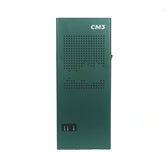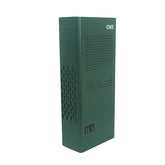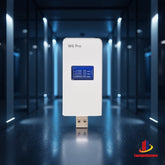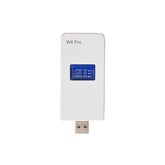Analysis: The pitfalls of the application of anti-drone equipment and the correct application
Most of the more popular police drone jammers on the market are gun-type (similar to gun-shaped) jamming devices. This type of drone jammer is impressive in video, but it is different from The actual combat application of UAV countermeasures is not consistent, and there are many defects:
1. Most UAV jammers use low transmission power (2-5W for a single frequency band), and the effective range is less than 500 meters, which does not meet the actual combat application scenarios of UAV countermeasures: UAVs with destructive power or terrorism-related behavior, Entering the range of 500 meters has reached a sufficient degree of danger and serious consequences!
2. Most of them use directional antennas: the premise of using directional antennas for gun drone jammer is that the direction and position of drones have been identified in advance, which is extremely unrealistic in actual combat of drone low-altitude defense! specific reason:
(1) In actual combat, the most basic requirement is that UAVs should not be able to enter the protected area, and only those that occasionally penetrate the defense may be discovered. It is too late to use directional interference after discovery;
(2) To use a directional antenna, the premise is that the UAV must be visible. In the actual combat of UAV countermeasures, the height of the UAV exceeds 300 meters, and the naked eye can no longer recognize it. When approaching at low altitude, trees, buildings, The occlusion of objects such as billboards will hinder vision;
(3) In the protection area of the UAV jammer, it may not be all sunny and fine weather. It needs to be considered that in cloudy, hazy or night situations, the discoverable distance of the UAV will be very short;
(4) The interference of directional antennas requires the personnel on duty to keep an eye on the sky and the near-earth space, but the human field of vision (the place where the eyes can see clearly) is limited, and if it takes a long time, there will be visual fatigue;
(5) UAVs engaged in sabotage or terrorism, attacking in multiple sorties, batches or from multiple directions, UAV jammers using directional antennas will take care of one thing and lose another;
(6) The gun-shaped UAV jammer has a built-in directional antenna. The user is close to the interference source, and the electromagnetic radiation received is also strong. Working for a long time will cause harm to the human body;

Realization goals of UAV low-altitude defense:
1. UAVs outside the protected area cannot enter;
2. UAVs in the protected area cannot take off;
3. Combining drone jammers and induction equipment to capture drones;
The correct process for UAV low-altitude defense:
1. Resolutely do not allow drones to enter the protected area, especially within the visible range;
2. Drive away, force-land, and capture drones that occasionally penetrate;
The correct application of UAV low-altitude defense:
1. Use high-power signal transmission: take the protection zone as the center, and require a coverage radius greater than 500 meters;
2. Omni-directional antenna is used to transmit: the equipment does not need to send special personnel to be on duty at close range;
3. Interference signals in some frequency bands of the UAV jammer continue to emit, such as: L1 induction signal of GPS (clearly mark the protection zone as a no-fly zone).
4. Selective emission of some interference signals of UAV jammers, such as UAV flight control frequency band signals, L2 navigation signals of GPS/Beidou/Galileo/Glonass, wireless image transmission signals, etc.;













